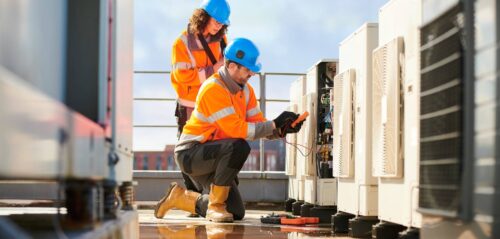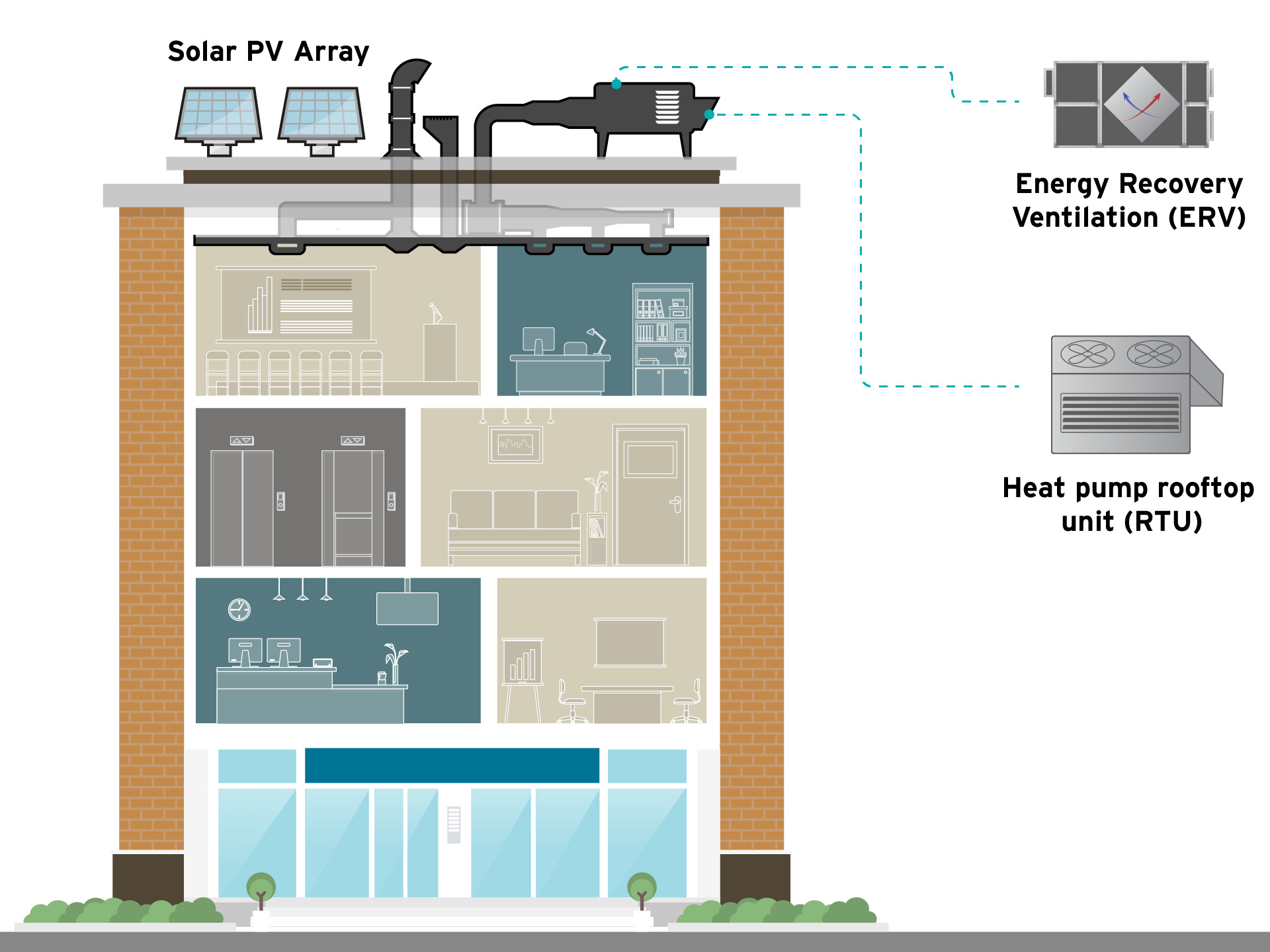
Report | 2022
Medium-Size Commercial Retrofits
How to Electrify Mid-Size Office Buildings to Save Energy, Money, and Carbon

Commercial buildings generate about 16 percent of energy-related CO2 emissions in the United States and about half of the total emissions from the building sector. Furthermore, direct fossil fuel combustion – primarily from onsite fossil gas use for space and water heating – in commercial buildings alone accounts for 5 percent of total energy-related CO2 emissions in the country.
Electrification retrofits that remove fossil gas are a key climate solution, but building owners are often uncertain about the economic return these retrofits offer. This new report analyzes electrification retrofit packages for mid-sized office buildings with packaged rooftop units – a common building type found around the US – in four US cities, finding that cost-effective retrofit solutions exist in each city. Specifically, we found that scalable electrification retrofits are economical for mid-sized commercial buildings that use a ubiquitous HVAC system: the packaged rooftop unit (RTU).
Achieving these positive economic results depends on finding the right retrofit package for each city – in Seattle, directly replacing the gas rooftop unit with a heat pump product is most cost-effective. In Chicago, it’s best to combine full electrification with ventilation efficiency measures and peak demand management. And in both Las Vegas and Washington, DC, the cost-effective package combines the equipment change, efficiency upgrades, peak demand management, and rooftop solar.
Given that most commercial properties are large — over 80 percent of commercial floor space in the United States is in buildings larger than 10,000 square feet — and are more likely to be owned as part of a portfolio, there is an enormous opportunity to replicate and scale solutions for commercial electrification and ultimately to have an outsized impact in the building sector’s transition toward a clean, carbon-free future.
This report analyzes the technical, economic, and environmental implications of retrofitting fossil-gas-fired space heating and domestic hot water systems in a prototypical 50,000 square foot office building. We compared a range of system decarbonization scenarios to a conventional gas-fired system replacement including heat pump water heaters, heat pump rooftop units, energy recovery ventilation, peak heating demand management, and on-site solar photovoltaics. The net present value (NPV) results are calculated relative to a baseline counterfactual condition where existing natural gas-fired equipment is replaced in kind.
Our results show that mid-sized office building electrification retrofits can be cost-effective when paired with the right complementary measures in each city we studied. These retrofits are likely to become more economical with increased policy changes across states and at the federal level. Regional climate conditions and gas utility rates are the primary drivers of the economics of decarbonization retrofits in the commercial sector. Furthermore, peak winter demands on the electricity grid can be minimized with ventilation efficiency and demand management.
Economics of Electrifying Buildings: Mid-Size Commercial Retrofits integrates electrification into a suite of energy efficiency measures that will save energy, cost, and carbon while mitigating peak electrical loads to provide resilience benefits for both the building and utility grid. It will help building portfolio owners understand the technical and financial conditions for pursuing efficient electrification retrofits in their existing assets. It will also provide valuable insights to state and local policymakers who seek to decarbonize the existing building stock.
